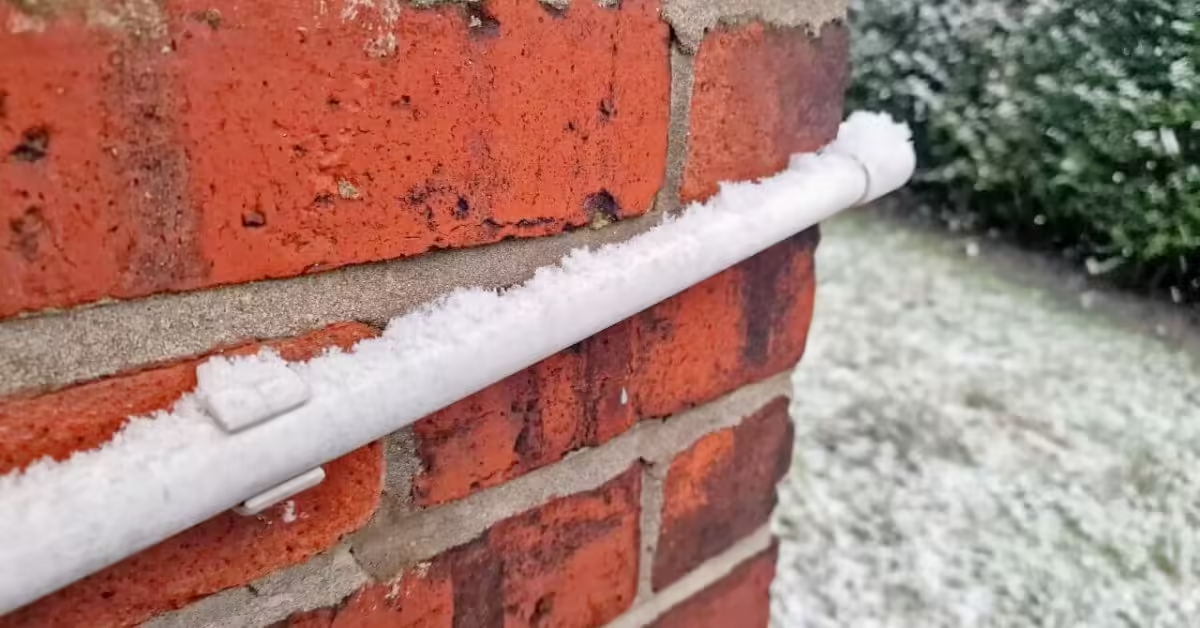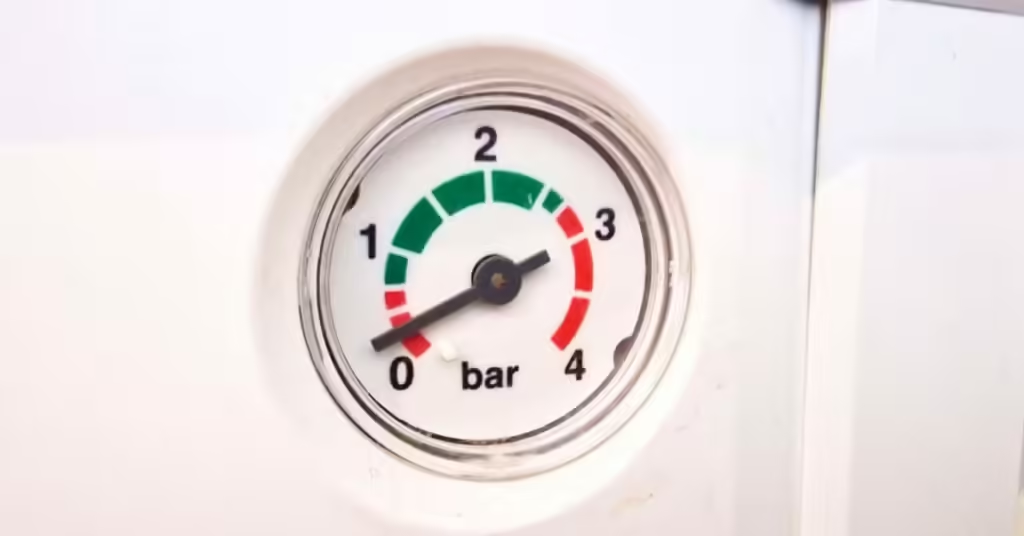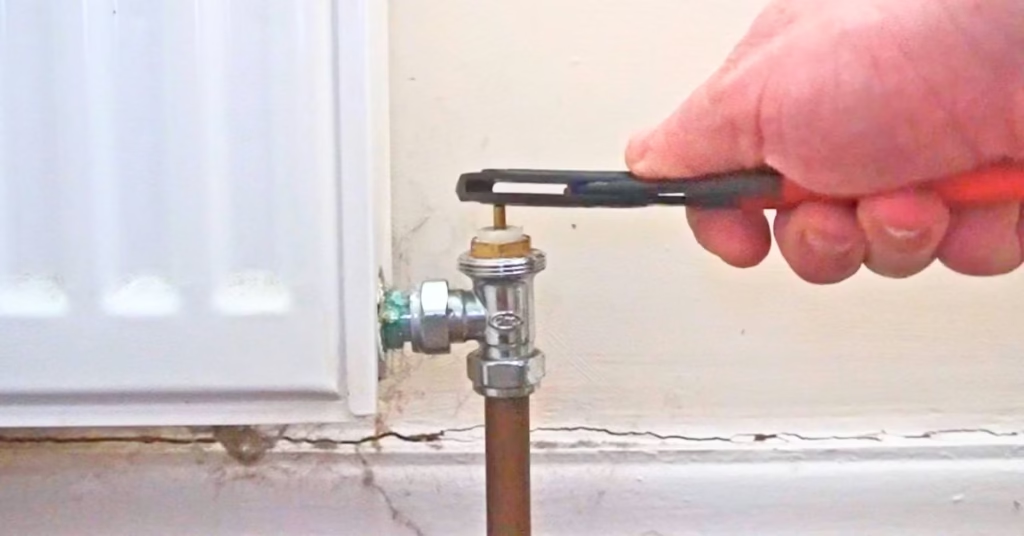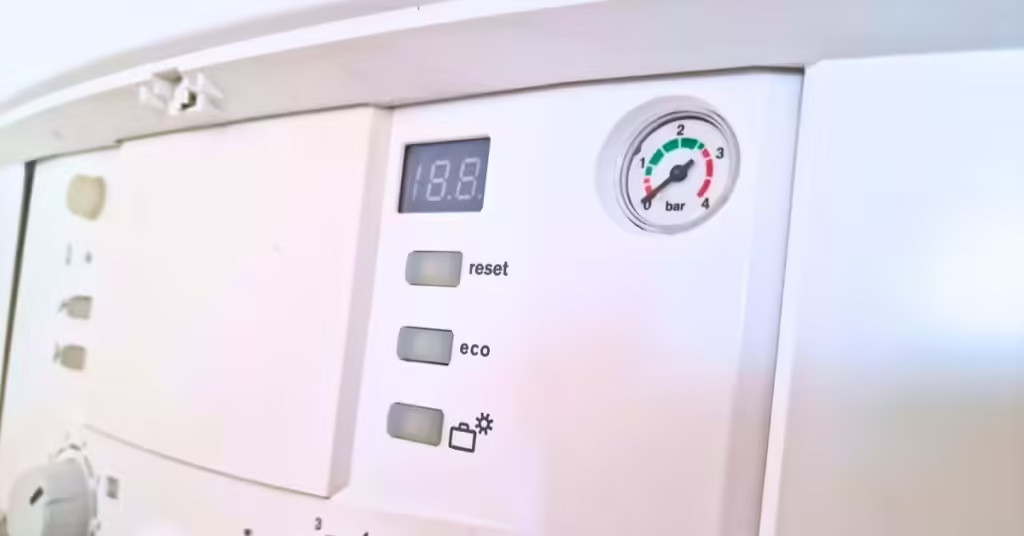Last updated on March 2nd, 2025
Having a frozen condensate pipe will cause your boiler to stop working, which means no heating or hot water when you need it most, in the freezing winter weather.
I have been repairing boilers full-time for over a decade and when the weather is freezing, the majority of calls I get for a boiler not working are for frozen condensate pipes. Here I’ll show you what to do and how to stop it from happening again.
Frozen condensate pipe symptoms
A condensate pipe carries the wastewater created in a condensing boiler from reusing the heat vapour to make it more energy efficient.
The only symptoms of a frozen condensate pipe are that the boiler stops working and you might also hear gurgling noises when the boiler fires up before it goes to lockout.
If your boiler is not working and it’s freezing cold outside (below 0℃), there is a good chance your boiler’s condensate pipe has frozen and you need to defrost it.
How to thaw a condensate pipe
To fix a frozen condensate pipe you must defrost the ice that has formed inside by thawing it out and resetting the boiler.
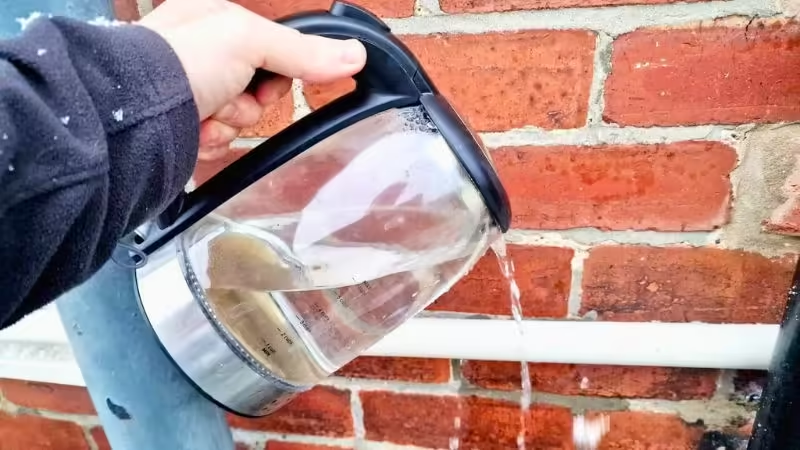
Once it has defrosted the pipe will be clear and your heating system will start heating your home again. The best way to do this is to pour hot water on it.
How to thaw a frozen condensate pipe:
- Fill a kettle with water and boil it
- Let it cool down a bit as you don’t want it too hot
- Pour it over the plastic pipe outside
- Repeat until it seems defrosted
- Reset the boiler
- Check if the boiler fires up when you put the heating on
- Repeat the process until the boiler fires up and the heating comes on
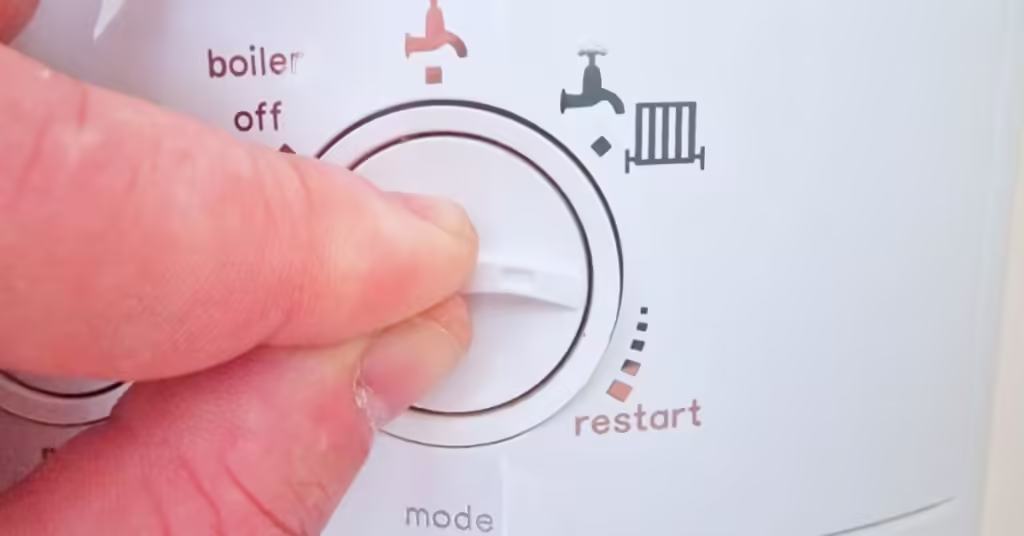
You can also cut a section of the pipe out with a hacksaw if pouring hot water on won’t fix it, and push the ice out to clear it.
How to stop condensate pipe freezing
The best way to prevent a condensate pipe from freezing is to have it discharge internally inside the property, or if it has to go outside, make sure it’s a 32mm waste pipe and it stays as vertical as possible.
Most frozen condensate pipes happen on undersized external pipes (22mm) going horizontally. It’s best to fix either of these problems before trying to protect the pipe but sometimes that’s not an option.
Condensate pipe frost protection
You should take condensate pipe frost protection seriously, especially if it has frozen before, but if the weather is cold enough virtually nothing will stop it from freezing. There are a few ways to help stop your boiler condensate pipe from freezing and minimise the chance of it happening, but nothing is guaranteed.
To maximize your chances of a condensate pipe not freezing, you can:
- Fit a drain cover
- Insulate any pipe that’s outside
- Fit a trace heating kit
Drain cover
Fitting a drain cover is the simplest action you can take to help protect against the wind chill freezing your condensate pipe. These are cheap to buy and easy to fit and can make a real difference to condensate and waste pipes freezing.
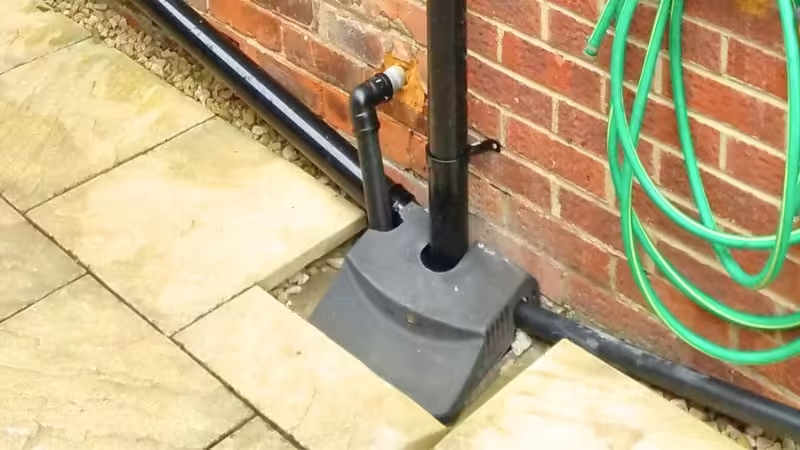
Insulate external pipe
Insulate every piece of condensate pipe outside the house with external pipe insulation. This will help greatly in those freezing temperatures. It’s typically undersized (22mm) horizontal pipes that freeze, but you can insulate any external condensate pipe, especially if it has frozen before.
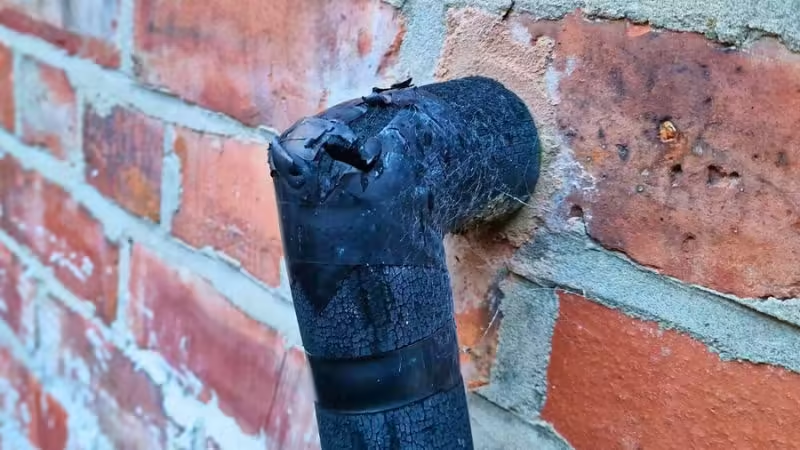
Trace heating cable
Fitting a trace heating cable is a great way to stop your boiler condensate pipe from freezing. It uses a self-regulating cable to heat the pipe when it drops below a specific temperature. This will keep the pipe warm and is the best way to stop a condensate pipe from freezing in the winter.
Condensate pipe keeps freezing
If your condensate pipe keeps freezing you should follow the HHIC guidelines for condensate pipe installation. If you keep having repeat problems with freezing you should start with the basics and make sure your condensate pipe is discharging indoors.
If you can’t do this, it’s a must to have any external pipe kept to a minimum, be 32mm in diameter, and not have any horizontal pipe. If you don’t have a drain near where the pipe goes through the wall, you can fit a condensate soakaway to keep that external pipe as short as possible.
You can also fit a CondenseSure to your condensate pipe which keeps the condensate wastewater warm.
Boiler condensate pipe blocked
if your boiler condensate pipe is blocked without it being frozen, this will need to be cleared to fix it. Condensate pipes can get blocked by the gunk in the waste pipe that the pipe connects to, typically on a kitchen sink.
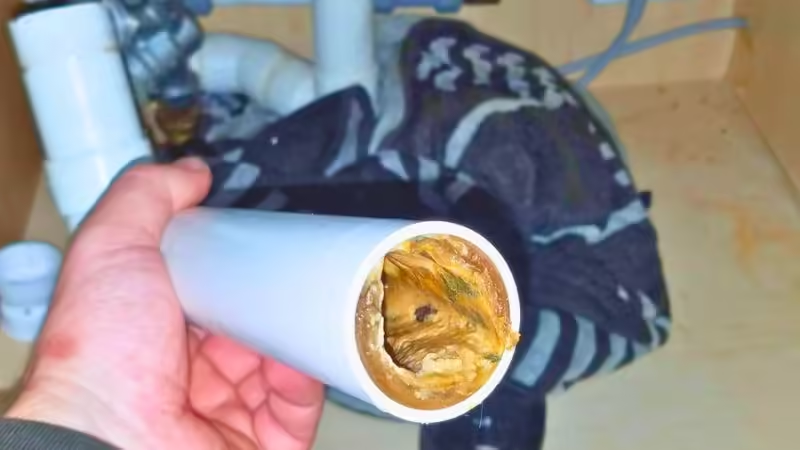
Summary
Thawing out a frozen condensate pipe is something every homeowner should know how to do to get your heating system going again. This is not something to call a plumber for as it will cost you, but also if your condensate pipe has frozen then it’s likely lots of people’s pipes have frozen and boiler repairers will be super busy!
Make sure to keep pouring that hot water over the pipe and resetting the boiler as sometimes the ice is solid and takes a while to defrost. It is possible to use a hot water bottle also but this will take a lot longer.
Feel free to ask any questions in the comments below, and I’ll do my best to help. If you found this post helpful, please consider sharing it.
FAQs
What does a boiler condensate pipe look like?
A boiler condensate pipe has to be plastic as the condensate wastewater from the boiler is acidic and eats away at metal. It’s usually white and is 21.5mm in diameter from the boiler, which should increase to at least 32mm if it goes outside to discharge as this will help to stop it from freezing in the winter.
Where does boiler condensate pipe go?
The boiler condensate pipe goes from the bottom of the boiler and must be on a constant fall to a waste pipe in the property. Under a kitchen sink is quite common. If the pipe can’t go into a waste pipe inside the property, it needs to go through a wall to an outside drain or to a condensate pump under the boiler.
Is a frozen condensate pipe common?
Yes, a frozen condensate pipe is quite common. The colder the weather gets in the winter, the more condensate pipes will freeze.
What temperature do pipes freeze?
Water freezes at 0 Celsius and boils at 100 degrees Celsius. So if you have pipes outside and the temperature is -1 or lower, then they will probably freeze. It’s very common in the UK for boiler condensate pipes to freeze in the winter. 0 degrees Celsius = 32 degrees Fahrenheit.
